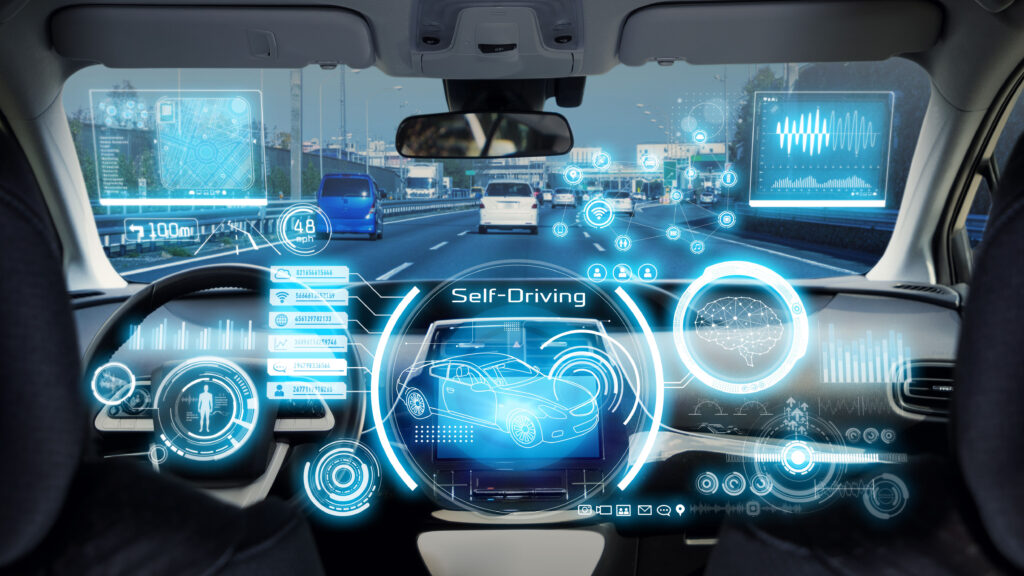Blog
Legal regulations regarding the terms used for automated driving systems
From the beginning of January 2023, a new law was introduced in the US state of California. The regulations prohibit the use by vehicle manufacturers and dealers of system names and functions descriptions that may imply the possibility of driving without the participation of the driver (Senate Bill No. 1398). The limitation applies to descriptions of functionalities that do not result directly from the actual capabilities of the vehicles.
Various types of simplifications used for the purposes of advertising became the prerequisite for the introduction of regulations. There are situations where the options of Advanced Driver Assistance Systems (ADAS) and the benefits of their use are described in promotional materials in a way that suggests that they enable driving in autonomous mode, without the need for the driver’s participation, while the currently offered vehicles do not exceed the L3 level according to the SAE J3016 standard, so they require the attention of the driver. In addition, the context of responsibility for a road accident, which according to legal regulations belongs to the driver, is not without significance.
In particular, use of the term “self-driving car” is controversial. Already at the beginning of 2021, Waymo, which is working on vehicles with higher levels of automation, pointed out that the phrase “self-driving” misleads customers into the vehicle’s capabilities, which can lead to significant risks for both the driver and for other road users. As a result, the company has announced that it is no longer using the term in its materials.
At the beginning of 2022, a group called “Self-Driving Coalition for Safer Streets”, popularizing knowledge about the advantages of using automated vehicles and associating large manufacturers, announced the change of its name to “Autonomous Vehicle Industry Association”. The issued statement emphasized that abandoning the term “self-driving” is related to the need to use precise and consistent language when describing technologies that automate driving. However, skeptical opinions regarding this change pointed out that replacing the wording in question with another term may not actually change the essence of the problem.
Issues related to the ambiguous nomenclature used for the needs of automated and autonomous vehicles and doubts regarding the correctness of descriptions of available functions are the subject of numerous discussions. It should be expected that in the near future further regulations, both in the United States and in the European Union countries may be introduced.
Research conducted by the Motor Transport Institute has highlighted significant differences in the way driver assistance systems operate in the case of similar system functionalities for different manufacturers. It has been noticed that systems with the same or similar trade name or functionality often have different schemes, methods of communication, operation or limitations. Inhomogeneity in this area may lead to incorrect reception of information and improper use of the solutions offered.
Most drivers assume similar responses from similar systems regardless of brand. This is an unfavorable situation for users, which means that the driver should read the manual of the used vehicle each time. In this situation, it seems beneficial to introduce standardization in this area, so that the driver can expect a similar mode of operation and messages from the systems of different brands of vehicles, as well as a similar location of the control devices of these systems. It is also worth considering unifying the naming of systems performing the same functions.
Source:
leginfo.legislature.ca.gov (Senate Bill No. 1398; California Law, Vehicle Code, Division 12 – Equipment of vehicles, Chapter 1 – General Provisions, Section 24011.5)
blog.waymo.com
|www.autonomousvehicleinternational.com
Pełka
M., Kruszewski M., Ucińska M., Odachowska E., Niedzicka A., Vetulani-Rzewuski
A., Socha K., Gąsiorek K., Pawlak P., Tests of selected driving assistance
systems in domestic road traffic conditions, Report on task 1 of the AV-PL-ROAD
project, ITS own resources.


